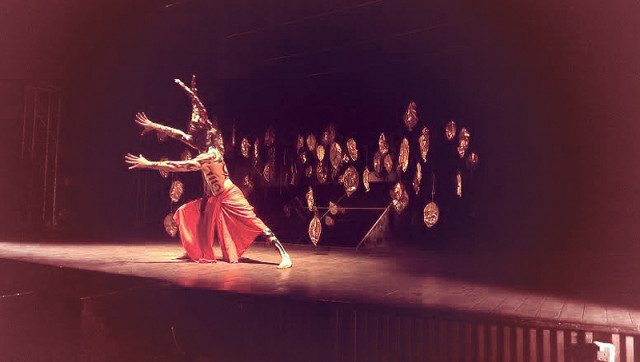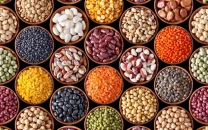Where's the Apple Joshinder?: The Forbidden Fruit
Amin Gulgee sends you on a journey with the question, ‘Where is the Apple?’ but discards the idea of an answer.

The performance epitomises Gulgee’s artistic evolution as he unshackles himself, letting go of his signature medium and presents an almost spiritual treatise. PHOTOS: PUBLICITY
You are lost as soon as the lights go off. There is a primal scream and the artiste starts sculpting a performance through movement. Amalgamating sound, light and colour, he reveals what most artistes don’t: the raw passion of creation and the scars it inflicts.
Where is the Apple? is sculptor Amin Gulgee’s latest piece of performance art. Produced by Pomme Gohar, it classifies itself as experimental theatre for the sake of the statement that the artist seeks to make.

Fortunately, this reductive description remains on paper. He manages to create something that is so vast that the physical space that contains it becomes obstructive.
The performance is both Gulgee’s comment on severe gender dictations and a refreshing display of transcending mediums of creative expression.
Divided in three acts, it starts as an installation piece in a Chaar Bagh (quadrilateral garden). A metallic forest of leaves, it alludes to the Garden of Eden.
Joshinder Chaggar as the lead along with Sunil Shankar, Erum Bashir and Vajdaan Shah set the static piece in motion. An intense combination of sound and visual, the characters set out to look for the forbidden fruit.
The narrative revolves outside the threshold of the garden of good and evil in the first two acts. Chaggar falls in love in the first act, Inside the Chaar Bagh. The anguished passion is mirrored both through a reflective surface on the stage and in Shankar’s performance as the object of her affection.
They both stop looking at their own reflections once they see each other. Unaware of gendered demarcations, Chaggar’s character defines itself by the intense love it carries — the kind that is capable of inflicting agony once betrayed.
Shankar’s affection for Shah is the catalyst for the second act, Outside the Chaar Bagh. Her sense of self is defined by her passion; hence, she uses Bashir’s character to physically manifest her pain on Shankar.

The human capacity to self destruct starts to set in. They start to look at themselves blinded by the sight of their bodies.
By the third and final act, Becoming the Chaar Bagh, all four characters have acquired genders. Chaar Bagh is destroyed as they become men and women when they fall from grace.
They cross the threshold and find themselves boxed in labels of right and wrong. They find the idea of the ‘forbidden’. The apple was never there. The question didn’t require an answer. They were sent on a journey to find new questions as they remain lost.
Where is the Apple? is a coming-of-age piece. It marks Gulgee’s artistic evolution as he unshackles himself, letting go of his signature medium and presents an almost spiritual treatise.
His premise is dangerously close to pop philosophy, the kind that makes you cringe and walk out. He does make you cringe, not at him but with him. His journey has begun, again.
Published in The Express Tribune, February 27th, 2014.
Like Life & Style on Facebook, follow @ETLifeandStyle on Twitter for the latest in fashion, gossip and entertainment.



















COMMENTS
Comments are moderated and generally will be posted if they are on-topic and not abusive.
For more information, please see our Comments FAQ